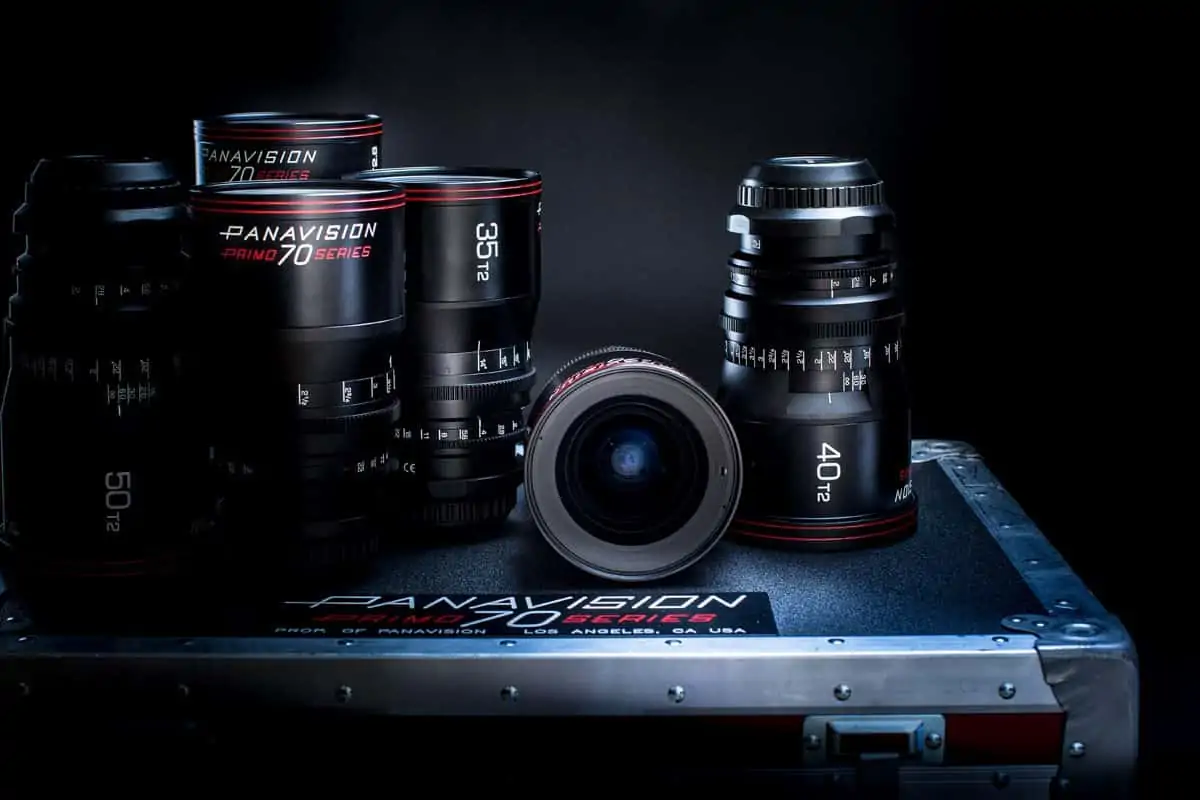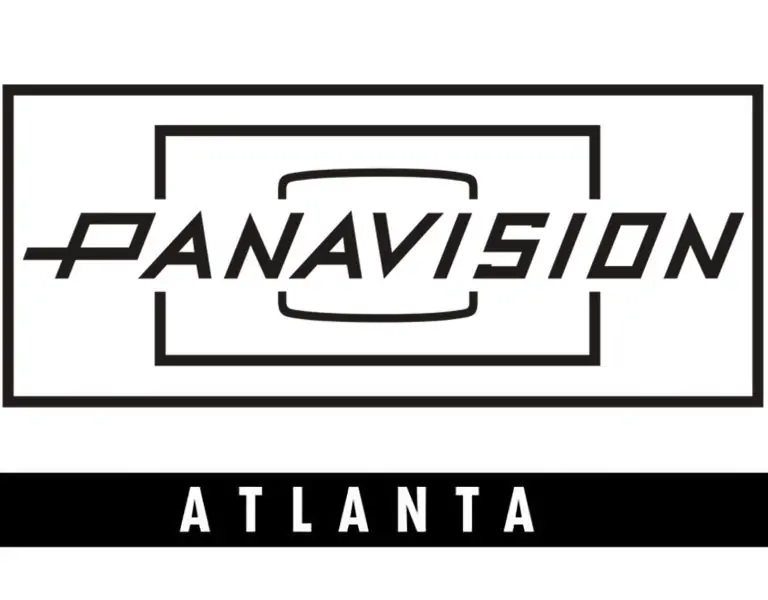Panoramic Views
Panavision

Panoramic Views
Panavision
BY: Adrian Pennington
Adrian Pennington spoke to Jeff Allen, managing director of Panavision UK, to learn more about the company’s current and future plans, including its next-generation camera.
Please tell us about your background and journey through the business?
JA: I started my career in engineering as an instrument maker, working on various pieces of military hardware. This included jigs for the first nuclear-tipped torpedoes that the Royal Navy used. At one company I built card-punching machines for Waddington’s that required very tight mechanical tolerances, so the playing cards had equal white borders as they were on pre-printed rolls. My segue into the film industry came via Lee Lighting. I built chokes for lamps and then moved over to the relatively new Joe Dunton Cameras. There I worked in the engineering workshop, which I went on to run. During that time I was a keen photographer and talked Joe Dunton into creating the re-mounted Leica macro lenses long before anyone else latched onto the idea. These were produced originally in BNCR mount and then later in PL/PV. During this period we also built the first blimp for the ARRI 16SR II that was used on The Professionals, which shot in small offices where camera noise was an issue. Later, I got involved with Mitchell Cameras after Joe bought it, where we developed the Mitchell Geared Head and the Mitchell Vitesse Head.
As a result of the Mitchell head programme I got involved in sales that expanded my role within the company. When Joe left the company, followed by John Buckley a year later, John Venables and I were asked to jointly run the company which, by this time, was re-named Panavision UK. A number of years later Panavision bought the Samuelson Group, which included Cine-Europe & Grip House to create the company we are today in the UK.
My role now includes overseeing Panalux and Lee Filters, although both these companies have their own MDs, under the Panavision Europe & Africa banner.
What are your views on the switch from analogue to digital technologies for filmmaking?
As long as Kodak can afford to continue to manufacture and sell film then that artistic choice should be available to the creative. That's not to say that we are anti-digital, but decisions should be taken by creatives for creative reasons so long as film is financially viable. Panavision is not developing any new film cameras, but while the ones we do have continue to perform – that we can maintain them to a high standard and there is film stock available – there is no reason to be pessimistic about the loss of film.
There have been incredible benefits to filmmakers in the move from analogue to digital. It's all about choice and the ability of companies like Panavision to provide the tools that allow creatives more avenues to express themselves. I think that many more stories can be told in new and different ways thanks to the advent of digital technology. That's a creative choice and one we respect.
You played a key role in lobbying for UK broadcasters to keep the creative choice of filmmakers to use 16mm film. Has this battle been lost?
JA: I think that the battle has not been won. That battle was lost to some degree when the BBC issued a diktat that it would not countenance the use of 16mm except in exceptional circumstances. While they may have reeled back from that slightly in the last 12 months the damage has already been done. I don't know of any TV programme shot on film in the past year. Its pretty much 100% digital. Nor I do think it is worth continuing the fight. I'm a realist, and I think there is very little we can do. Again, it's not really for us to make that decision. It is for creatives and producers to decide that film or digital is the route to go down and we'll supply and support their choice.

What are DPs telling you about they want from camera development?
JA: The main thing they tell us is that the pictures that the current crop of digital cameras gives them are too sharp. That they want more of an organic look that they are used to getting from film. There is almost too much information being captured onto sensors. Consequently, we've seen rising demand for older lenses, refurbished in new housings, so that cinematographers can differentiate their productions. An example is the release of the PVintage series. These use true vintage glass from actual Ultra Speed Primes, re-housed in modern mechanics to be more user-friendly.
How will camera technology have developed in a decade?
JA: Most of the technology in digital cine cameras has transferred from digital stills photography and we see that trend continuing. The sensor, for example, was developed first in stills, and we can look to that mass market for the direction of moving picture tools. With the A7, A7R and A7S Sony has created cameras with three different sensors and three different looks all in a common body, in the same way that the ARRI Alexa's sensor has a different set of attributes to the RED Dragon or to a Sony F65. Cinematographer’s will chose the camera for a particular look just as they used to select film stock. There are a whole array of artefacts in sensor design that will influence the final picture, so the cinematographer has to have great knowledge about what each particular camera can achieve.
There are other interesting approaches such as light-field cameras, although I'm not totally convinced that the current light-field cameras on the market do exactly what they say on the tin, otherwise sales would be racing away. One reason maybe that stills photographers want the choice of choosing lenses for different fields-of-view, and this is not so easy with light-field technology. Nor am I sure what advantage light-field would give to the moving image unless you are using it for certain VFX shots. You want the ability to manipulate depth-of-field to heighten a scene, not necessarily to have someone manipulate that depth-of-field in post. There is still a lot of development work to go here.
Does the pre-visualised and post-produced lighting design of Gravity signal a new era for cinematography?
JA: A camera like the ARRI Alexa or RED Dragon is effectively a computer with a lens on the front to gather light onto a light sensitive sensor. After the pictures are taken they are put into another computer to be manipulated in post. So whether you are a purist or not, you are basically moving images from one computer to another, a process that is well established in stills photography where you might use Lightroom or Photoshop to add effects. So Emmanuel Lubezki and Alfonso Cuarón were using all the tools at their disposal for Gravity to create the look that they wanted for the production. After all, we don't have an accurate way to replicate shooting in space.
What does Panavision's acquisition of digital post facility Light Iron tell us about the future of cinematography?
JA: In the same way that cameras are computers, so on set tools are equally computers increasingly capable of performing manipulation of the image before it goes into another computer for VFX and editing. A logical move by Panavision as it looks to the future is to be more involved in what happens to the image after it leaves the camera so that we can continue to help the creative to realise their vision. You can expect to see the first Pana-vized Outpost cart (on-set dailies and colour management mobile unit) sometime in 2015.

What is your view of the cinema experience of the future?
JA: Cinemas need to deliver an out-of-home experience that people can't get with their home theatre system. Cinemas have to innovate. One of the ways are giant screens and the production and presentation of large screen movies in 65-70mm format such as Interstellar [filmed partly using IMAX cameras]. The last time this format was widely used was in the 1950s and 1960s with film, but there is so much more that filmmakers can achieve in the digital domain.
Movies out of home should be an experience. That means everything from a pristine picture presentation to luxury seating and imaginative catering over and above regular concessions. Exhibition definitely needs to move to 4K projection and to explore every technical enhancement from laser projection to boost light levels in 3D screenings, to immersive audio formats like Dolby Atmos, and higher than 24fps frame rates.
When can we expect the new Panavision digital large format camera?
JA: This camera continues to be in development. Our view is that we will only release a new product to market when we feel it is ready. We face a number of technical challenges, as one would expect when you are innovating a brand new imaging system from the ground-up, but we won't make it available until we are happy that the images the camera produces can justify Panavision's brand and reputation.
However, we have released the Primo 70 lenses. These large format lenses can currently be used on the RED Dragon or ARRI Alexa XT, and other large format cameras, and consist of 12 primes and three zooms. Primes from 24mm to 150mm are all T2, while the 200mm and 250mm are T2.8. In addition, we have three zoom lenses covering focal lengths from 28mm to 400mm. The lenses were designed to provide high performance and exhibit flat field, natural sharpness, minimal chromatic aberration, minimal breathing, excellent field illumination and close focus performance.
Is the current production boom in the UK sustainable?
JA: Yes, as long as the tax break remains. I think UK Screen, PACT and other organisations have made a compelling economic argument that inward investment is, and remains, hugely beneficial to the UK creative industries and the wider economy.
There are 110 major features shot globally every year [according to PwC] generating a box office value of around $80 billion a year. By the end of 2017 that will rise to $100bn. If you rewound a decade, then 50% of the global box office take would have come from the U.S. Wind forward to 2017 and the figure [according to PwC] is 20%. That doesn't mean that the overall take from the U.S. has gone down, but that the percentage from other countries like Europe and Asia has risen. It is simple business economics to go where the money is and major studios are extremely well aware that they have to have international presence to reflect their audience. That's why the UK production boom is sustainable.
Take another example: Netflix grew its business in the U.S., subsequently exported its subscription model to Europe and is set to go global, reflecting the worldwide market it wants to sell to. To continue to be successful they have to reach local audiences as well as global audiences.
What does Panavision need to do to continue to be successful?
JA: Listen to our clients and deliver them the best service we possibly can. It is that simple, and it's a formula Panavision has lived and breathed for over 60 years. In terms of R&D we run an extensive optics programme. No sooner have we perfected one set of lenses than we are designing the next, and we continue to flesh out our Pana-vised accessories according to feedback from clients. Everything we do is focused on making and servicing the tools that make life easier for the crew on-set and that improves the ability of creatives to achieve what they need to tell great stories and create the best-looking pictures.




